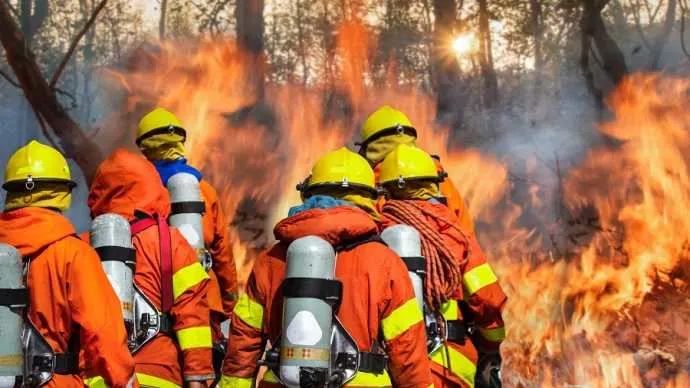
Fires a fact of life in Alberta, prevention is key
Alberta is expected to see an average risk for wildfires for much of this summer, but scientists warn that "normal conditions" could still result in significant fire activity in the province.
"Average in a fire-prone landscape means there will still be fires," Michael Norton, director general of the Northern Forestry Centre, said on Wednesday. "Exactly how many, exactly where, exactly when — we're not able to predict that level of specificity."
"But average conditions mean we're not currently forecasting the kind of weather and moisture conditions that would lead to very severe fires growing very quickly following an ignition."
SEE ALSO: Carbon dioxide tops 415 ppm, highest level in human history
The long-range forecast suggests the fire hazard could rise to "above average" in southern Alberta by September, and in the Rockies as early as July.
Meanwhile, much of neighbouring B.C. will be at an increased risk of fires through the summer season.
Those long-term forecasts, however, may change depending on the weather.
But Norton warned that Western Canada has both the fuel — abundant forests — and the conditions — drier, hotter, windier weather — to lead to fires.
"The historic approach to fire in Canada has been one of fire suppression; this notion that fires will occur and we'll just go and put them out. That doesn't work anymore. If it ever worked, it doesn't work anymore."
RELATED: Can smoke from wildfires affect your allergies? What we know
The public still needs more awareness about how to reduce the risk of human-caused fires, and homeowners need to know how to mitigate the risk of catastrophic damage to their properties, with programs such as Fire Smart offering many tips, he said.
A green thumb can help protect your home from wildfires Meanwhile, jurisdictions are co-operating to "increase the bench strength" of people available to fight extreme fire events, said Bruce Macnab, the head of wildland fire information systems for the Northern Forestry Centre.
"Even in fairly normal conditions, there are planes and people being moved across the country from an area with low risk to one with a very high level of fire activity," he said.
"Every jurisdiction is going to have a bad event, and they'll require help from elsewhere."
WATCH BELOW: A DAY IN THE LIFE OF A WESTERN CANADIAN FIREFIGHTER
CLIMATE CHANGE HAS EFFECTS
Though fire has always been a fact of life in Canada, fire research assistant Ellen Whitman said climate change will affect the fire landscape.
"As the climate continues to warm and dry, we also expect fires to continue to become more common in Canada, in terms of increasing in numbers, increases in areas burned, and also becoming more frequent," she said.
"In Western Canada we are seeing an increase in area burned. That's certain. Across parts of B.C., the Yukon, the Northwest Territories, and northern Alberta — all of those regions have seen increases."
The Northern Forestry Centre in Edmonton is part of Natural Resources Canada.










